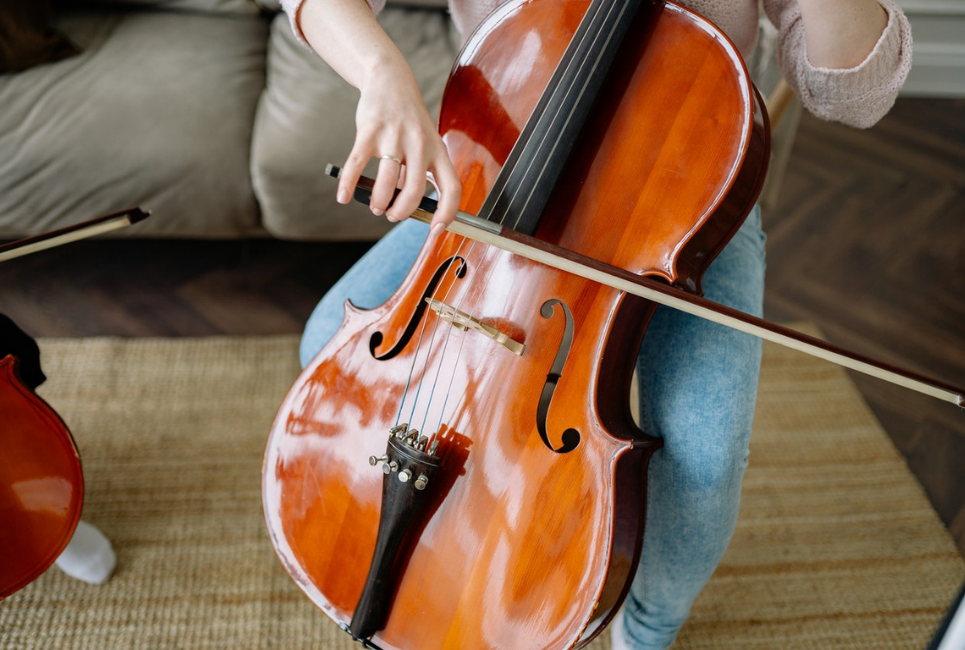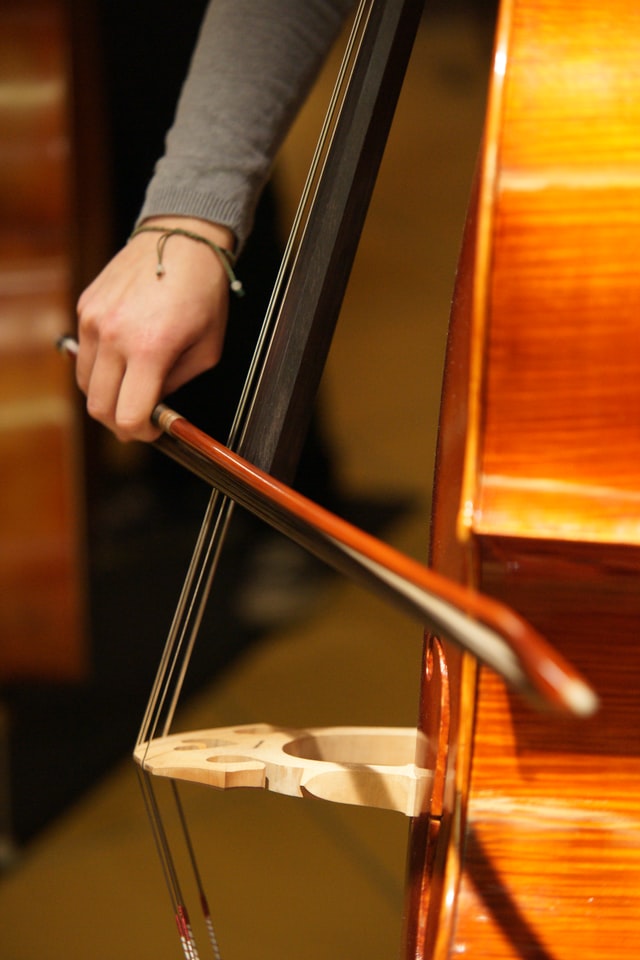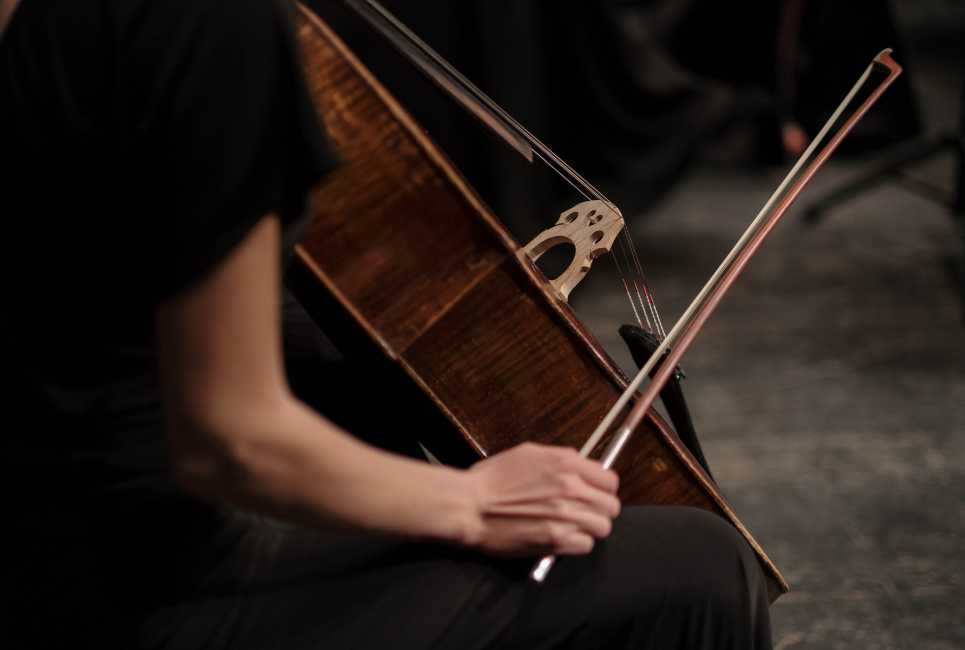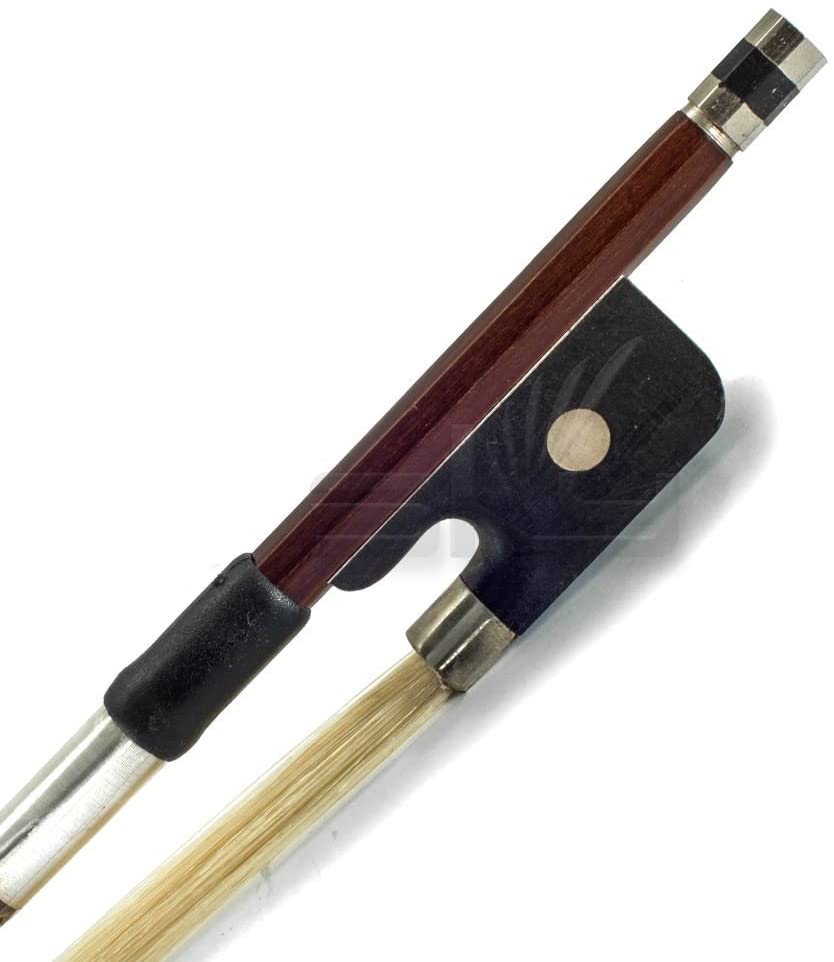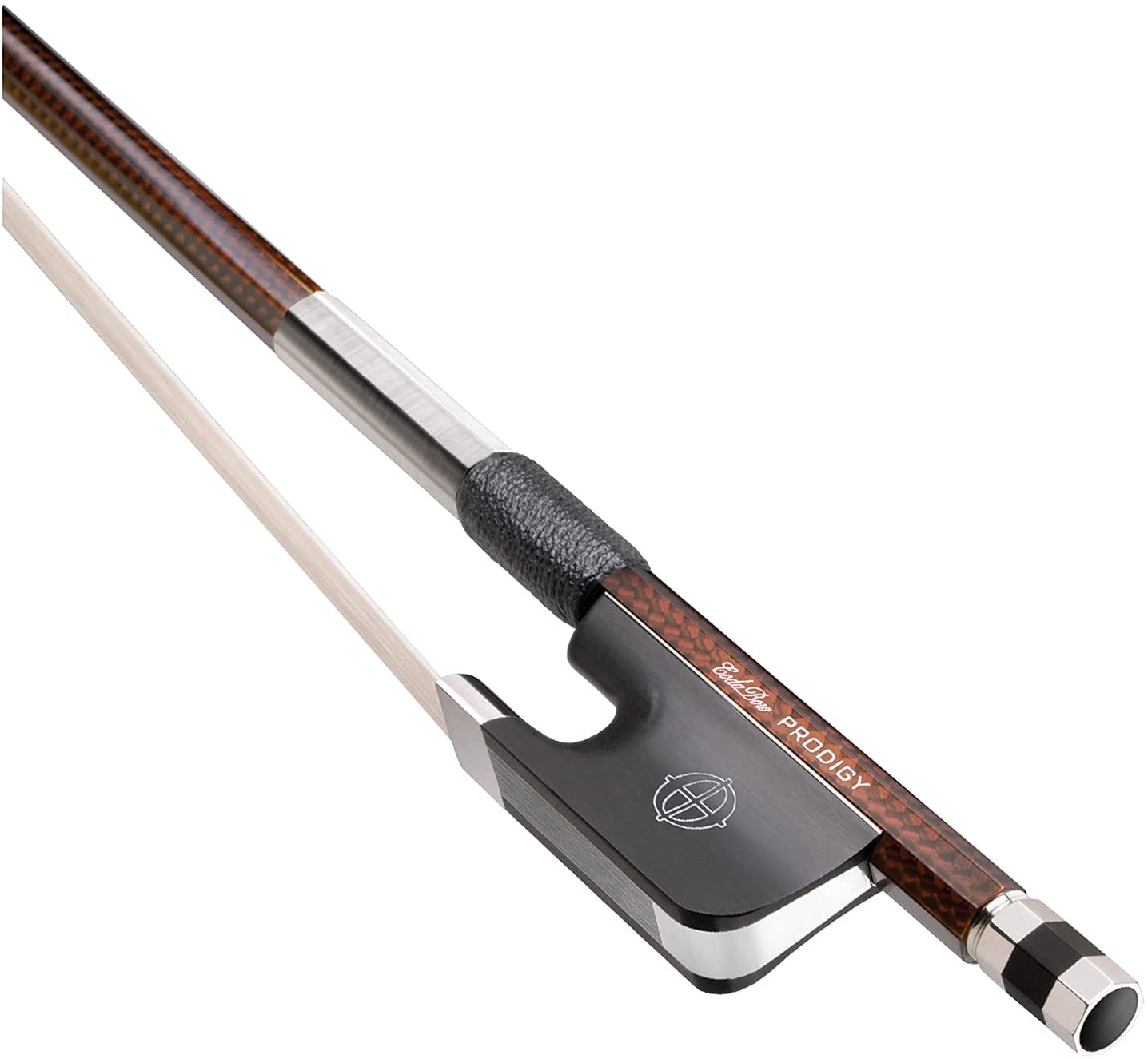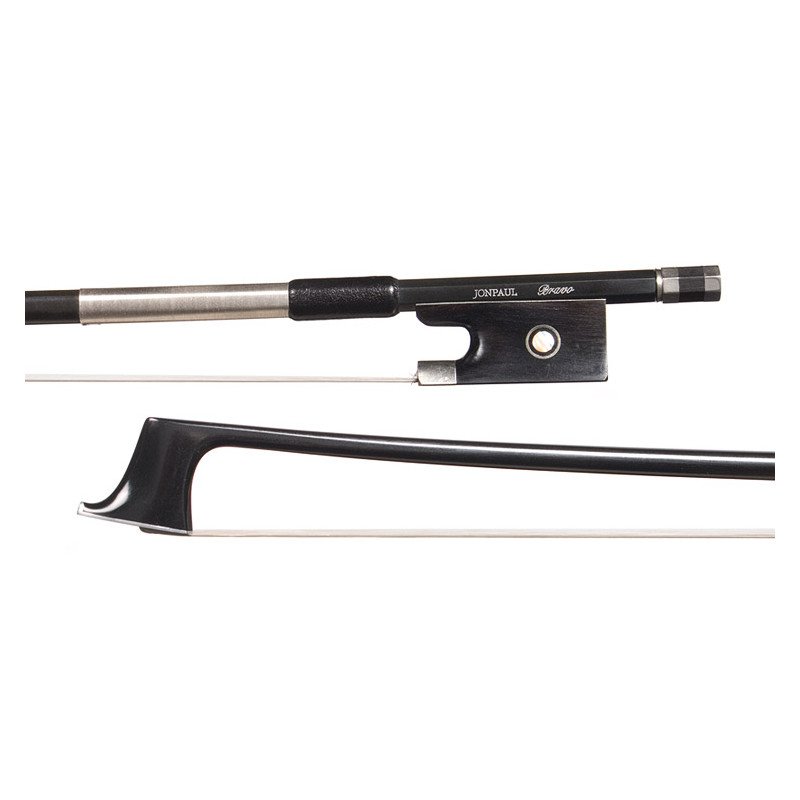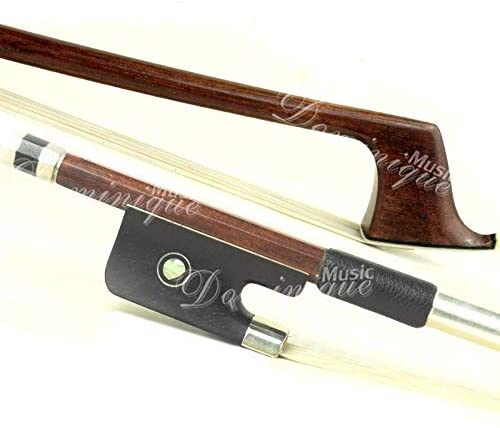- How to Find the Best Violin Tuner: My Best Expert Advice for Beginners - December 26, 2021
- How to Find the Best Cello Bow - December 26, 2021
Bottom line up front: There’s a lot of cello bows on the market. However, I would highly recommend you go into a store to try out different bows until you find the perfect bow for you.
So you’ve ventured into the world of playing cello – congrats!
I’m here to tell you that there’s a LOT of information you can find online about how to choose the perfect cello. However, you’re going to find it difficult to find advice on how to find the perfect cello bow. Surprisingly, your cello bow has a huge impact on not only the playability of your instrument. But, you’ll also find that your cello bow has an impact on your sound and your comfort while you’re playing. That’s right – your instrument isn’t the only thing responsible for these factors.
There’s a lot that can impact the sound of your cello. But, one of the most important parts of your cello‘s playability and sound doesn’t even come from the cello at all. Instead, it actually comes from the bow, or other people call it the stick.
And if you’ve never played the cello before, you may be shocked to find out that sometimes, cello bows can cost several thousand dollars. Know, I know what you may be thinking: “why the heck would I spend a couple of grand on a cello bow?!”
Well, if you want to sound like you know what you’re doing on the cello, you’ve got to start off with the right materials. Investing in a high-quality cello bow will help your instrument the sound smoother and richer.
Now, there’s a lot that goes into finding the right cello bow for your instrument. But don’t worry – I’m going to have your back throughout the entire journey. In this guide, you’re going to get tons of information on how to choose the right cello bow for your instrument. Let’s get going!
What Makes a Good Cello Bow?
There are four qualities that make up a high-quality cello bow. These qualities are:
- Weight
- Balance
- Flexibility
- Strength
Weight
On average, a cello bow can range from 2.30 ounces to 2.82 ounces. The heavier bow you get, the more effort you’ll have to put out to use the instrument. And while this weight doesn’t sound like a lot, the difference in the weights between the two bows makes a world of difference.
However, the extra weight added onto the bow makes a world of difference when it comes to the sound that’s produced. For example, if you were to choose a lighter bow, you’ll have to put out more effort to get a lot of sound out of your instrument compared to using a heavier bow.
When you end up with a heavier bow, you’ll need to have more control and strength from your forearm, wrist, and hand. If you don’t have enough strength or control, you’ll struggle to keep your box in contact with your strings. Plus, it’ll make playing with a heavier bow tiresome because you’ll be straining the muscles in your hand, wrist, and forearm.
And while a lighter bow may seem like it’s easier to manage, this isn’t always the case. A bow that’s too light can be difficult for a new player to use because it requires some level of mastery. Without the proper skill, it can be difficult for a new player to sustain the notes they’re playing without overexerting themselves.
Balance
When you’re looking around for a cello bow, you’ll also want to make sure your bow is balanced. If you purchase a bow that isn’t properly balanced, it can cause you to have strained muscles in your wrist. As an example, if you buy a cello bow that’s heavier towards the tip of the bow, you’ll have to use more muscles in your wrist. Over time, this can cause you to develop pain when you’re playing.
Strength & Flexibility
Lastly, you’ll want to make sure your bow is flexible and strong. When you purchase a bow, there may be a chance that you end up with a stiffer bow. And with a stiff bow, you may find that you have a faster response with your bow but are not able to achieve dynamic contrast with your bow. When you’re shopping around for a bow, you’ll want to purchase a flexible and soft bow. With this type of bow, you’ll be able to achieve a responsive and rich tone.
In addition, you’ll want to make sure that you purchase a cello bow that matches the size of your person and the size of your cello. For example, if you’ve purchased a 4/4 cello, you’ll want to make sure that you purchase the appropriate size bow for this instrument.
What Is a Cello Bow Made Out of?
What your bow is made out of really depends on how expensive it is. However, there are some basic materials that all cello bows are made out of.
The largest part of the cello bow, which some people call the “stick,” has three different materials it can be made up out of. You’ll find cello bows are either made out of brazilwood, Pernambuco, or carbon diner. Pernambuco is a super high-quality grade of wood that comes from Brazil.
As time continues to go on, a lot of cello bows are made out of carbon fiber. However, some of the most expensive bows on the market are made with Pernambuco; cello bows that are made with this type of wood are considered the highest quality on the market.
There are some cheap cello bows on the market that are made with fiberglass. However, a lot of beginner-friendly bows are made out of fiberglass. Fiberglass is a great material to use for a beginner-friendly cello bow.
Different Cello Bow Materials
Now that you have a better idea of what a cello bow can be made of, it’s time we take a look at the pros and cons of the different cello bow materials. Before you set your heart on a specific type of cello bow material, you need to consider a few different factors. You’ll need to consider your experience with playing cello, how much you’re looking to spend on a bow, and what type of environment you’ll be playing your cello in.
But don’t forget – your personal preference matters here too. There isn’t one type of cello bow material that’s superior to others. While there are cello bow materials that are high-quality, they aren’t necessarily any better suited for you than other types.
It’s also important for you to consider what type of cello you own. Do you own an acoustic cello? Do you own an electric cello? These different types of cellos will need different types of bows.
Carbon Fiber
First, let’s talk about carbon fiber. There’s a lot of cellos that have hit the market in recent years that are made up of carbon fiber. Using carbon fiber to make up cellos is super popular because carbon fiber is durable in all types of weather. Plus, it’s a lot stronger of a material than wood.
A lot of people like using carbon fiber bows because of their consistency. Whether you’re playing outside in cold weather or you’re playing in a venue that’s really hot, your cello bow is going to hold up.
Fiberglass
Fiberglass is an option for you to look into, but I wouldn’t really recommend it.
Why?
Fiberglass bows are pretty cheap. And while they hold up okay, there are better options out there for you if you don’t have a whole lot of money.
Wood
There are two types of wooden bows you’ll find: brazilwood and Pernambuco.
And yes, it’s totally okay if you’ve never heard of these types of woods until you started looking around for cello bows.
Cello bows that are made up of brazilwood aren’t as high of quality as Pernambuco. That’s because brazilwood comes from the parts of a tree that aren’t nearly as dense as Pernambuco. And that means it isn’t as high of quality.
As for Pernambuco, it comes from the heartwood part of a tree. This makes this type of cello bow hold up a lot better because it’s sturdier and denser. However, this type of cello bow is a lot more expensive than brazilwood. Yet, a lot of experienced musicians will purchase this type of bow because of the quality of the wood. Since it’s a lot denser, it doesn’t bend or become misshapen under pressure. In addition, they’re a lot stronger and produce a balanced tone.
Don’t get me wrong, there isn’t a lot wrong with brazilwood. And if you properly take care of your brazilwood bow, it’ll definitely last you a long time. But with Pernambuco, you can get an amazing sound. The biggest downside to this type of bow is that it can literally cost thousands of dollars.
Best Cello Bows
Now, it’s finally time to get to some product recommendations! I’ve chosen the cello bows I’ve listed below based on availability, ease of use, longevity, and positive customer reviews. There are literally an unlimited amount of cello bows out there, so narrowing it down got a little tricky. But, you will find that I’ve chosen bows for nearly every budget out there.
CodaBow Prodigy Carbon Fiber 4/4 Cello Bow
The CodaBow Prodigy Carbon Fiber 4/4 Cello Bow uses light materials, so you’ll find that the price of this bow isn’t as much as other options in this list. You’ll find that this box is made with carbon fiber. There are silver nickel fittings with mother-of-pearl sidings; even if you’re a professional musician who plays cello every day, this bow will last you for many years to come.
However, you don’t have to be a professional musician to use this cello bow. Even if you’re an intermediate player, you could experiment with this cello bow to take advantage of the unique technology showcased in this bow.
Pros
- Warm and bright sound
- Responsiveness found in the soft flexibility of the bow
- Handcrafted in the USA
- 5 year limited warranty
Cons
- Slightly heavy, despite the use of light materials
JonPaul Bravo Model Carbon Fiber 4/4 Cello Bow
If you’re an intermediate player that’s looking around for a bow, you should look into this affordable option. You’ll find that this bow will produce a rich and warm sound, thanks to the Pernambuco wood mixed with the nickel and ebony frog features.
There’s high-quality horsehair used with this cello bow that helps to produce a unique balance mixed with outstanding sound control.
Pros
- Sophisticated looking
- Silver alloy tip
- Lightweight box
Cons
- Customers have complained of the bow breaking during shipment
D Z Strad Model #805 Pernambuco Bow
This is an outstanding student bow that comes from a company that’s well-known in the professional industry. This bow is made with Pernambuco, which is the highest quality wood that you can get. But you don’t have to pay an outrageous price tag to get your hands on a Pernambuco bow, either.
When I personally used this bow, I enjoyed the extra weight on it. I found that it really helped to produce a richer sound. However, make sure to test out the extra weight behind this bow yourself before you commit.
Pros
- Affordable
- Heavy enough to create a unique sound
Cons
- The bow doesn’t grip onto strings too well – you may need to use extra cello rosin
- Heavier than a carbon fiber bow
FAQs
Answer: Now that you have a better idea of what to look for in a cello bow, it’s important for you to know how to properly test a bow. There are a few tips that you should keep in the back of your mind while you’re going out shopping for a bow.
First, you should know what you’re looking for before you go out shopping for a cello bow. You’ll need to figure out what your goals are. Whether you’re looking for sound, agility, comfort, increased dynamics, no matter what your goal is, figure it out before you go shopping.
Plus, you should never pay attention to the flash and glam of a cello bow. There’s a lot of cello bows out there that look beautiful, but this shouldn’t be something you’re shopping around for. Just like you wouldn’t buy a cello just because it’s pretty, you shouldn’t buy a cello bow for the same reason.
Also, hold a bow in your hand whenever you can. You should feel like the cello bow you’re holding is an extension of your arm. If it feels too heavy or too light, start looking for something else.
Keep in mind, it’s going to take some time to find and figure out what the right bow for you is. Don’t get discouraged if you don’t immediately find the perfect bow for yourself.
Answer: So, you don’t really re-string a cello bow in the same way that you re-string a guitar. Instead, you re-hair your cello bow. And yes, you can re-hair your cello bow! It’s quite difficult to do, so it’ll be best that you take it to a professional to get this done. You should have your cello bow re-haired every six months, especially when the seasons change.
Answer: No, you shouldn’t use violin rosin on a cello bow. Violin rosin isn’t as sticky as cello rosin. Cello rosin makes it possible for your cello bow to get traction on the thicker strings of your cello. Violin rosin isn’t sticky enough to make this happen.
Finding the Right Cello Bow
Now, at the end of all of this, I’m here to tell you one thing: finding a cello bow that’s right for your instrument all comes down to making a personal decision. You need to decide what you feel is right for and the sound of your instrument. So, if I’ve made a suggestion on here that you don’t agree with – go ahead and find another bow that fits your needs and the needs of your instrument better than the suggestion I made.
But, it’s also important for you to keep in the back of your mind that if you’re a complete beginner, you don’t need to invest in the best bow on the market. But, if you want to take things up a notch in your playing journey, you should work on investing in a higher-quality cello bow.
And it’s also okay to try out several bows! Don’t feel discouraged if the first couple of bows you’re trying don’t feel like the perfect fit. If possible, try out several different bows before you decide on the one you’re going to keep. This is especially important when you’re investing your hard-earned money into models that might be a bit expensive.
Looking for more interesting readings? Check out:

